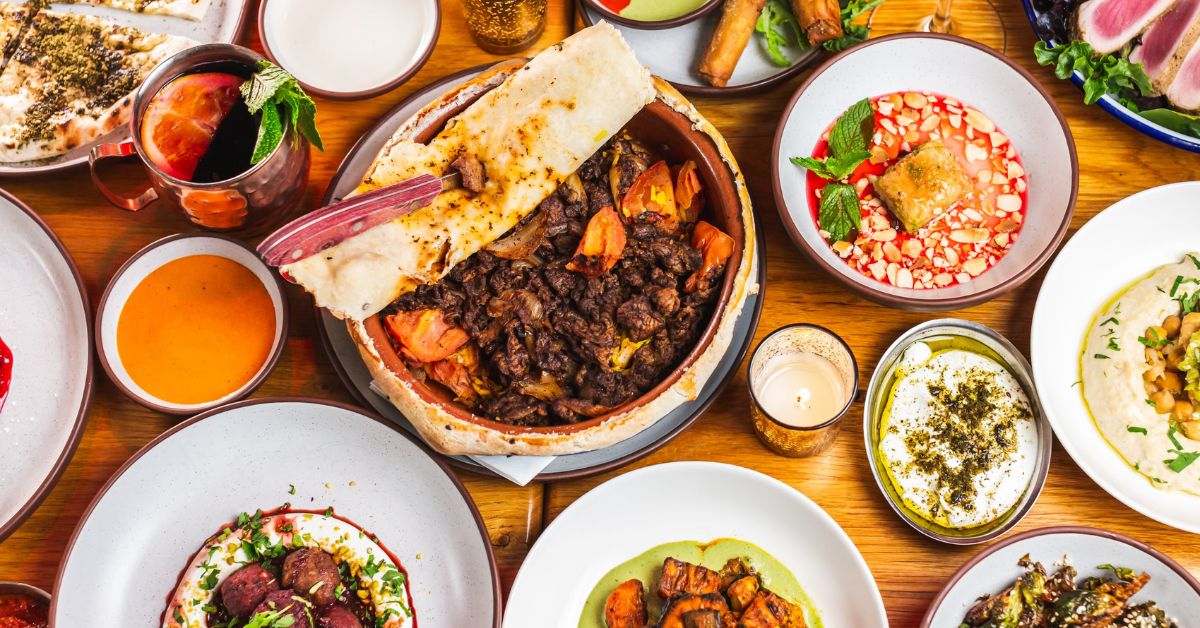
Opening a new location is an exciting milestone for independent restaurateurs—but it’s not without its share of challenges and risks. Expansion should be approached with careful consideration, strategic planning and a solid understanding of what made your first location successful in the first place.
Peter Marzulli, Director of Operations for 6R Hospitality Group—a multi-concept restaurant group with four restaurants in New York City alone, including the city’s beloved Miriam restaurants—knows a little something about managing a fast-growing restaurant group.
When its flagship Miriam in Brooklyn was bursting at the seams with customers, 6R Hospitality Group opened a second location in the Upper West Side, followed by Miriam Street Food—a pick-up and to-go concept that also serves as a central hub for their off-premise catering services across the city’s five boroughs.
In 2015, the group opened Tribeca’s New Orleans-inspired 1803, complete with balcony, terrace and underground jazz club. And by the end of the year, the group plans to open one if not two more restaurants in New York. “We believe Miriam to be a very well-received and successful concept,” says Marzullu. “And we believe there’s room for that concept to keep expanding.”
Keep reading for Marzulli’s top five tips for independent restaurants ready to grow.
Miriam uses Lightspeed to manage multiple locations with ease
How Miriam is growing with Lightspeed's one-stop restaurant solution.

Understand your business and its performance metrics

Opening a new location requires a deep understanding of your concept and target market, as well as thorough research into potential locations. Make sure you have a clear understanding of what made your original location a success. Is it the location, the food, the customer service? It’s likely a combination of all of these, plus all of the processes that go into pulling them off successfully. Understanding these elements is crucial to replicating your success.
Of course, before you consider opening a new location, your flagship location needs to be running like clockwork and in good financial health—and have the data to prove it. “I use data and reporting to really analyze my business before I make decisions,” says Marzulli. It’s good to have instincts, “but it needs to be backed up with firm data. [It’s important to have] that information easily available when I need it.”
“It’s good to have an instinct […] but it needs to be backed up with firm data.”
Have a detailed plan of action in place

The importance of planning for your restaurant expansion cannot be overstated. “Know what you’re going to do before you do it,” says Marzulli. Because once you open your doors, you won’t have time to keep up. Have documented systems in place for just about everything—standard operating procedures, training manuals, employee handbooks, recipes, etc.—especially if you ever want to be able to let your managers take ownership of the day-to-day. (And you do.)
It’s also essential to have a detailed budget and financial plan in place. Include your anticipated startup costs, ongoing operational costs and a significant buffer for unforeseen expenses. Depending on how you’ll finance your new location, you may need to be able to show your bank that you have a strong financial history of at least 3-5 years with your original location, demonstrating profitability and the ability to generate enough cash flow to support your expansion.
“Set your plan of action, get your budgets correct.”
Proceed with caution

It’s important to approach expansion with a level of caution and realism. “Everyone already knows restaurants have very thin margins to start with,” says Marzulli. “And so, [with inflation] year over year that gets even thinner.”
Plan for the worst-case scenario by being conservative in your revenue projections and overestimating potential costs. This approach will help you prepare for unforeseen challenges and make sure that your expansion doesn’t jeopardize the financial stability of your existing operations. “Be pessimistic in general, understanding that restaurants are a tough game,” says Marzulli. Especially in the first year, when things are particularly volatile.
“Be pessimistic in general, understanding that restaurants are a tough game.”
Be ready to pounce when the right opportunity arrives

The restaurant business moves fast. From the labor market to technology and customer demands, change is the only constant in this rapidly evolving industry. “You have to always have your finger on the pulse and be ready to adjust,” says Marzulli. This is the same approach you need to bring to your expansion plans. “With restaurants, it’s very rare that it’s a perfect situation,” continues Marzulli. “Realistically, we’re always looking—and it’s time whenever an opportunity arrives. You have to keep your head on a swivel.”
In other words, keep your eyes open for signs that it’s time to move—be it an unbeatable lease offer, a prime spot becoming available or shifts in the market that favor your brand. Trust in the groundwork you’ve laid and be prepared to commit fully once the moment arrives. “When the concept meets the location and everything seems to make sense, then you take the dive.”
“When the concept meets the location and everything makes sense, then you take the dive.”
Use a system that brings everything together on one platform
A single, unified restaurant management platform becomes indispensable when managing multiple locations. Don’t wait until you’re at the end of your rope trying to chase down and reconcile sales, inventory and labor data between disparate systems.
A one-stop point of sale (POS) and restaurant management platform will also help you ensure consistency in customer experience and operational efficiency. “As an operator of multiple locations, it wouldn’t make sense for me to use multiple systems,” says Marzulli. “Having everything together in one platform means I can access all my data in one place rather than drive myself crazy.”
Afficher cette publication sur Instagram
Unlock your restaurant’s omnichannel potential
If you’re not quite ready to open a new location, why not start by expanding your current one? New markets and channels enable you to grow revenue and brand recognition with minimal risk, while also preparing you and your team to handle more sophisticated operations and more moving parts.
Consider growing sales and reaching new customers with delivery apps like DoorDash and UberEats, or add an ecommerce component and sell branded merch like t-shirts or signature sauces.
As for 6R Hospitality Group, “our plan is to take the templates that we’ve built that have been successful and expand our reach,” says Marzulli. “We have our eye on some neighborhoods we haven’t been able to get into yet, and we’ve already expanded into delivery and off-premise catering.
“We’re also considering some new concepts as well as some hotel subsidiaries. As we expand, we’re becoming more and more of a management company as well. So we’re expanding not only on the restaurant side, but on the overall management side of things as well.”
Images and video courtesy of 6R Hospitality Group.
6R Hospitality Group is powered by Lightspeed. Talk to an expert to learn what you can do with Lightspeed.

News you care about. Tips you can use.
Everything your business needs to grow, delivered straight to your inbox.


